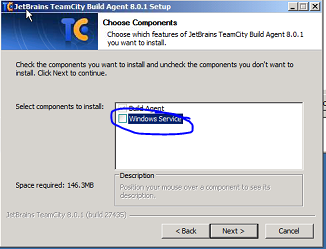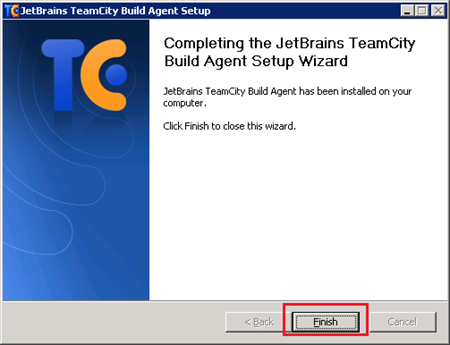

- #TEAMCITY BUILD AGENT HOW TO#
- #TEAMCITY BUILD AGENT 64 BIT#
- #TEAMCITY BUILD AGENT MANUAL#
- #TEAMCITY BUILD AGENT ARCHIVE#
- #TEAMCITY BUILD AGENT SOFTWARE#

#TEAMCITY BUILD AGENT HOW TO#
To get a general idea of how to install TeamCity for evaluation, you can watch this video tutorial, or read the full guide below. Custom plugins installed might require increasing the values defined via the Xmx parameter.Įxecutable Windows installer bundled with Tomcat and Java.

These settings should be suitable for an installation with up to two hundreds of agents and thousands of build configurations. An agent can be installed on the same computer as the server or on a different machine. It is installed and configured separately from the TeamCity server.
#TEAMCITY BUILD AGENT SOFTWARE#
tar.gz distribution instead.Ī TeamCity Build Agent is a piece of software which listens for the commands from the TeamCity server and starts the actual build processes. Unless the TeamCity server runs with more than 100 agents or serves very active builds / thousands of users, it’s unlikely that you will need to dedicate more than 4Gb of memory to the TeamCity process. The 32-bit JVM can reliably work with up to 1Gb heap memory (-Xmx1024m). tar.gz installation unless not changed in the server configuration). (Port 80 is used for Windows installation, unless another port is specified, port 8111 for. The default address that can be used to access TeamCity from the same machine depends on the installation package and installation options. If you want to get a pre-configured server right away, put files from a previously configured server into the Data Directory. Step 5 Push the ejectors until they are parallel with the face of the compute node. Step 6 Configure the compute node as needed through Cisco Intersight. If you opted to install the services, use the standard Windows Services applet to manage the service. Typically, you will need to unpack it and make the script perform the steps noted inConfiguring Server for Production Use section. See the informationbelowfor changing the server port. The TeamCity server will now start automatically when the machine starts. Step 2 Press the release button at the center of the compute node’s faceplate to disengage the ejector handles. Also, when the compute node disconnects from the midplane, the compute node powers off. Make sure to keep the compute node vertical while removing it. Step 2 Press the release button at the center of the compute node faceplate to release the ejectors. Note While you are inserting the compute node, keep the ejectors open. The compute node is correctly aligned when the compute node top cover is pointing to the left.
#TEAMCITY BUILD AGENT ARCHIVE#
Use the archive to unpack TeamCity bundled with the Tomcat servlet container. TeamCity stores the build history, users, build results, and some runtime data in an SQL database and allows you to select the database type. TeamCity installation package is identical for both Professional and Enterprise Editions. Make sure your web application server is stopped. Please increase the memory accordingly if you have other web applications running in the same JVM. Otherwise, to start or stop the TeamCity server and one default agent at the same time, launch the runAll script via a command line.Įnsure the TeamCity web application gets sufficient amount of memory. To start/stop the TeamCity server and one default agent at the same time, run the runAll script via a terminal. It is recommended to use the 32-bit JVM unless you need to dedicate more than 1Gb of memory (via -Xmx JVM option) to the TeamCity process or your database requirements are different. You are viewing the documentation of TeamCity 9.x, which is not the most recently released version of TeamCity. To choose the documentation corresponding to your TeamCity version. If you need to pass special properties to the server, refer toConfiguring TeamCity Server Startup Properties. TeamCity server can run under both the 32- and 64-bit JVM. It’s highly unlikely that you will need to dedicate more than 4Gb of memory to the TeamCity process.
#TEAMCITY BUILD AGENT MANUAL#
Archive for manual installation bundled with a Tomcat servlet container. Check/configure the TeamCity logging properties by specifying the nfiguration and teamcity_logs internal properties. The TeamCity server will restart automatically if the server process exits without invoking “teamcity-server stop” script.
#TEAMCITY BUILD AGENT 64 BIT#
It does not make sense to switch to 64 bit if you dedicate less than the double amount of memory to the application.


 0 kommentar(er)
0 kommentar(er)
